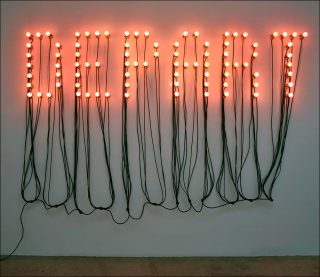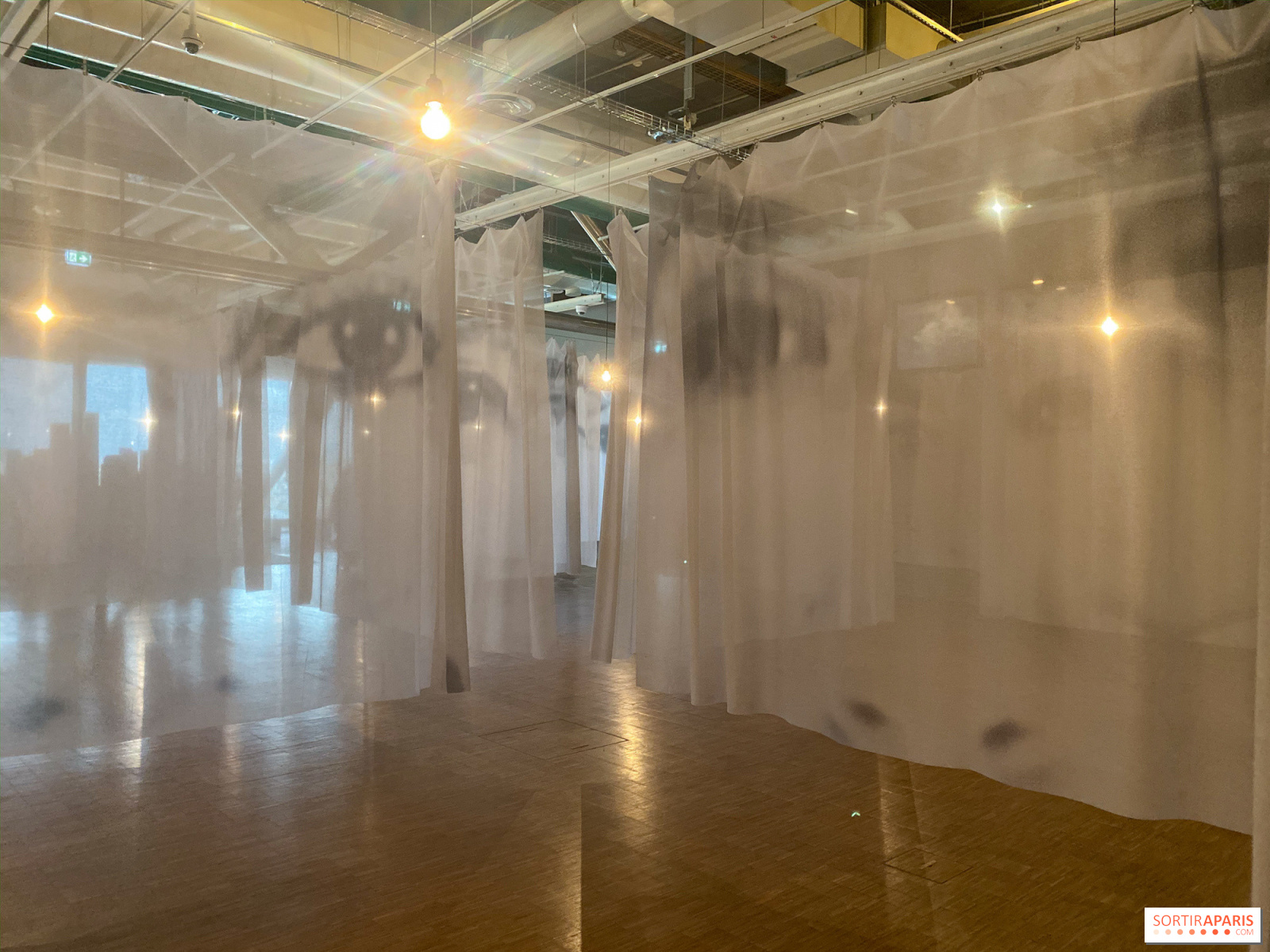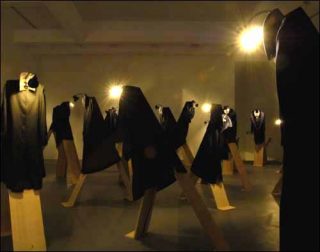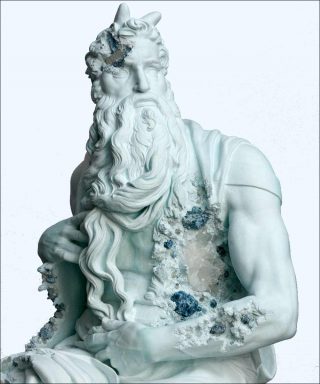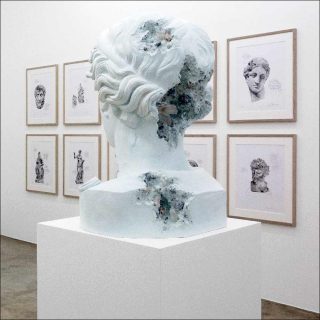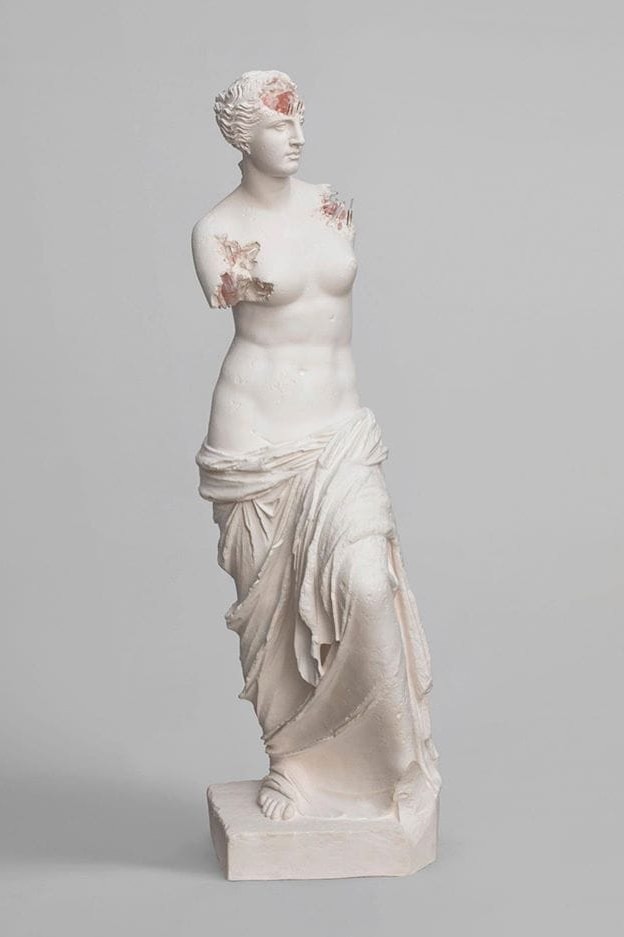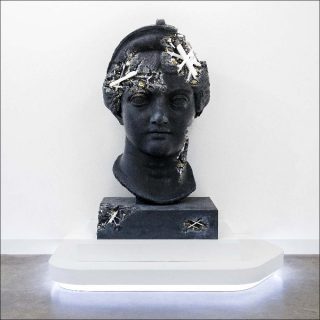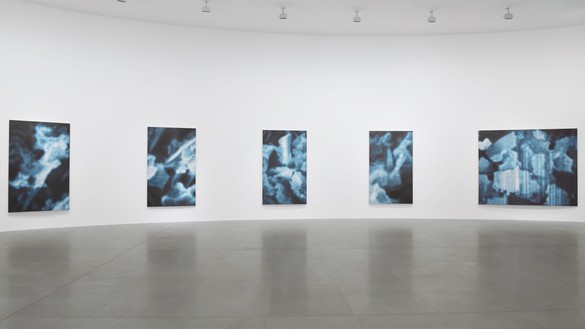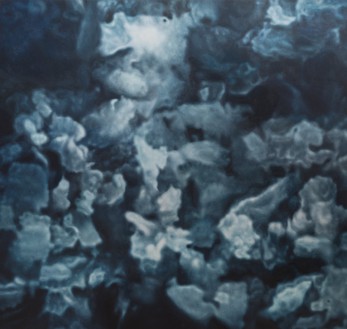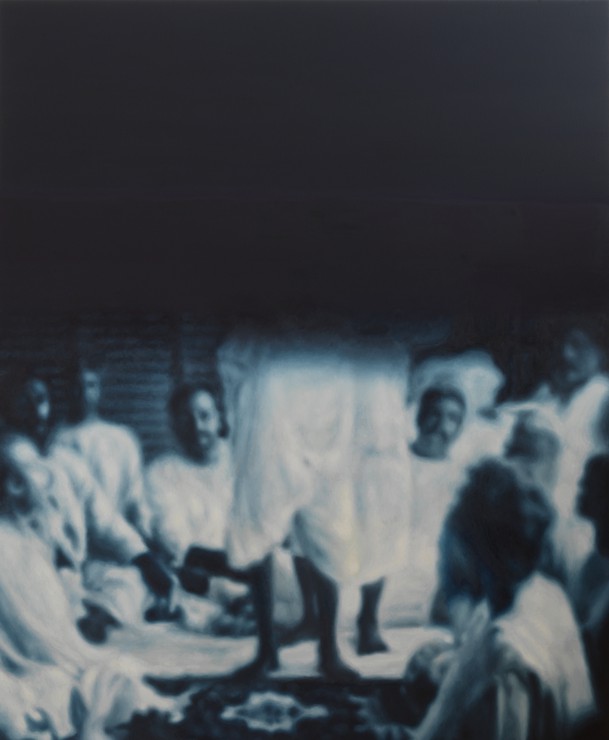 |
| Gregory Crewdson, Redemption Center, 2018-2019 |
On day one of the lockdown light as it was labelled by the French government, the French protested and I went to look at art. My first stop was Galerie Templon's new space on the rue du Grenier Saint-Lazare to see the Gregory Crewdson exhibition. These sixteen new works by one of America's most interesting contemporary photographers are troubling and confounding thanks to the images' representation a horrifying view of America. Learning more about Crewdson's process brings relief. We learn that the photographs are obsessively staged images floating somewhere between a surreal fantasy, a horror film and the harsh reality of contemporary America. In other words, there is no place that looks like the one in the photographs.
 |
| Gregory Crewdson, The Taxi Depot, 2018-2019 |
Each image contains at least two people, usually stopped in the middle of an action, each separated from the others, isolated. Crewdson's production process of composing multiple exposures produces human figures whose bodies are exposed, both physically and emotionally. Their skin looks like wax and their situation is distressing. Often the fact that they stand still adds to the sense that they are more like zombies than people. In one of the rare moments of human life found in these photographs, a young man on a verandah holds a baby's bottle of milk, staring into the distance. At the bottom of the stairs leading to the road below, a pram that, like every other object in Crewdson 's photographs, could have been sitting there for decades. Nothing looks as though it was recently used or is usable and yet, in the middle of it all, a baby is alive.
 |
| Gregory Crewdson, The Cobra, 2018-2019 |
The figures are always suspended in worlds that cannot nurture them, a carpark with old furniture, an industrial lot, a street blocked by a fallen light post, a dilapidated back lot filled with concrete slabs, a fallen tree, cast off rubber tyres. Within spaces littered with the refuse of another era, the people seem to be caught in the middle of activities that make no sense - young boys asleep on an old mattress in the middle of an old driveway surrounded by the puddles of yesterday's rain. A woman looking at an ambulance stretcher in the middle of a clearing, another sitting in a wheelchair on a dirt driveway, an old juke box ten feet away. Each person, like the surrounding objects, has been very carefully placed on the "set," that tells of a story on pause. We keep wondering what just happened? why are they there? what's going to become of them in this hostile environment? And, of course, this is America in 2020. Again and again, signs of sickness populate the frame: the ambulance stretcher, but also a woman's leg gouged out, a man on crutches, others lying down. it is a world of disease in all its various meanings
 |
| Gregory Crewdson, Red Star Express, 2018-2019 |
It is not only what is in the photographs that makes them unsettling, even troubling. The view presented is impossible. The angle from which the scene is photographed is always slightly elevated, as though the viewer is being invited to swoop down onto the scene. But yet, we are suspended above this world that has been stopped in its tracks. The aspect ratio of the photographs is also unusual, closer to that of widescreeen cinema than to the traditional formats of photography. I found myself discovering the images laterally, walking across them, searching for clues of a trace of life that I might have missed. I felt as though I was trying to find a way out of this surreal nightmare that is rural America. But there is no way out.
 |
| Gregory Crewdson, Cherry Street, 2018-2019 |
In keeping with - or perhaps in contradistinction to - the cinematicity of the Twin Peaks-ike world of the town in the photographs, it is geographically and historically isolated, out of time and place. It is not just that the action has been stopped by the projectionist. From what we see in the photographs the town has stopped in time. This, despite the fact that there is a keen sense of repetition, the same place used over again in different images, from a new perspective. Every object is stopped in historical time; the containers have been uncoupled from truck engines and they sit, idle, one in flames, while young boys wander across a road in the foreground. Geographically, we see hills in the background, but there is no sense of a world outside of this timeless nightmare.
The title, An Eclipse of Moths, is curious for a series of works in which there is very little sign of life. We think of moths as swarming around an artificial light, in order to expose their wings, even if it is only on the way to their death. In Crewdson's photographs, there is no buzzing, let alone urgency of any kind.
 |
| Gregory Crewdson, Funeral Back Lot, 2018-2019 |
A street sign in the photograph with the man and the child's pram spells A L O N E. We can still see the erased M. A L O N E is nevertheless the message that I get when looking at these photographs. Everyone is alone - isolated from others in the spaces they occupy, like the times we live in, the narratives we inhabit. In addition, the sense of isolation from the rest of the world, of being left alone to fight on for one's life in a world that cannot and does not attempt to nourish, is a familiar state of affairs



















